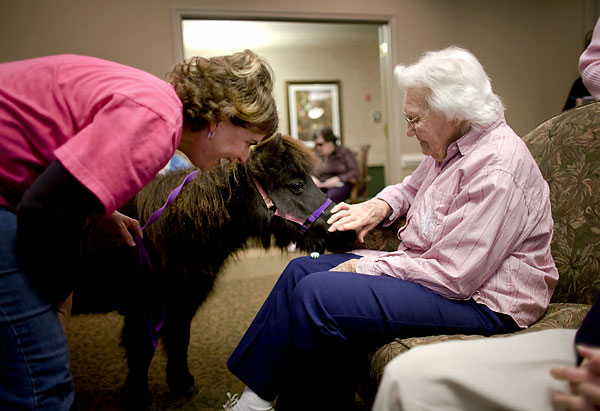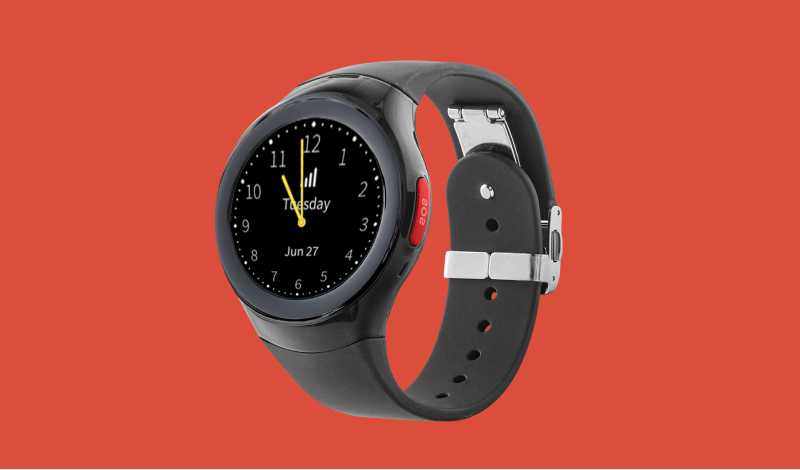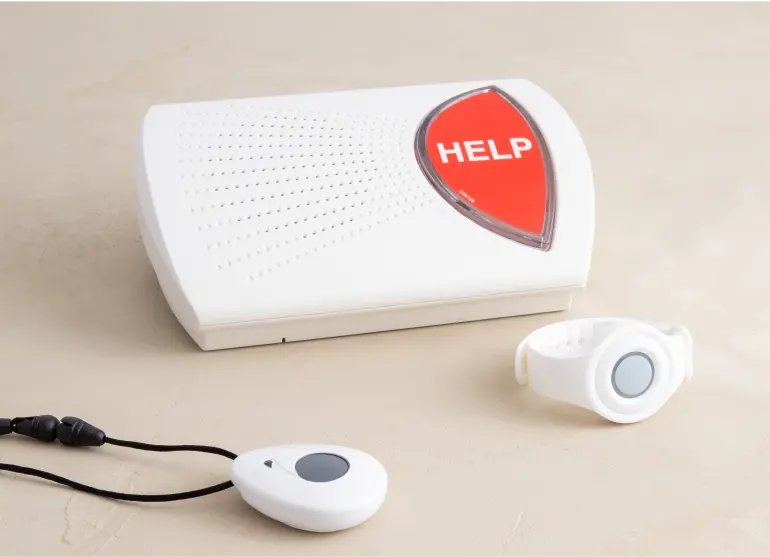Although the term “robotic pet” conjures memories of the “The Jetsons'” nuclear-powered mechanical mutt, today’s robot pets are furry, interactive, and even have a “heartbeat.” It can be a great solution to relieve loneliness in seniors who aren’t able to care for a live animal or who live in a situation that prohibits pets.
After all, robot dog never needs a walk and won’t annoy the neighbors with barking, while a robot cat never soils her litter box or shreds the furniture.
The Benefits of a “Furry Friend”

Even before COVID lockdowns began, many seniors experienced loneliness and isolation. Now, it’s worse for many. Seniors living alone at home or in long-term care facilities may only be able to socialize through windows and video chats. Social isolation can lead to many adverse health consequences, including higher risk of premature death, dementia, hospitalization, heart disease, and stroke.
For many seniors, the unconditional love and companionship provided by a pet provides a real lifeline – particularly when human contact is so severely limited. According to the Pets for the Elderly Foundation, many peer-reviewed studies highlight “the many benefits of living with a furry friend.”
“Studies have shown that the bond between people and their pets can increase fitness, lower stress, and bring happiness to their owners. Some of the health benefits of having a pet include: decreased blood pressure, decreased cholesterol and triglyceride levels, decreased feelings of loneliness and increased opportunities for socialization.”
There are also downsides to companion animals, including the cost for food and medical care, the necessity of daily care for the animal, and the danger of senior falls caused by pets. In addition, many landlords, long-term care facilities, and senior living communities don’t allow live pets.
None of those problems apply to robot pets!
How Lifelike is a Robot Pet?
Robotic dogs and cats are more lifelike than many people realize. Hasbro’s “Joy for All” robot pets are targeted explicitly to seniors and designed to mimic actual animal behaviors. For example, the company programmed its robot cat to respond like, well… like a real cat:
“Cats don’t do what you want them to do, so the pet’s reactions are completely random,” said Fischer. Stroking the Joy for All cat might elicit a purr, for example. Or the cat might just ignore you and lick its paw. ”
This heartwarming news clip shows how robotic pets are helping patients at one memory care assisted living facility:
For many seniors, they’re lifelike enough to improve quality of life.
How Much do Robotic Pets Cost?
Robotic pets designed for small children cost approximately $35 but they have very limited functionality. Consider investing in one made specifically for seniors. Those models start at about $65.
- Ageless Innovations Joy For All Companion Pets have built-in sensors that recognize touch, open and close their eyes, lift their paws, communicate with “vibrapurr” or barking, and have realistic, brushable fur. They’re available as cats, puppies, or a kitten model. Prices range from $65 to $130, depending on the model.
- The Tombot emotional support dog is billed as the “most realistic robotic animal” available now. The golden retriever puppy responds to voice commands, makes real puppy sounds, has interactive sensors, and rechargeable batteries. They’re available for preorder for $399.
Do Robot Pets Really Help Seniors?

There’s plenty of anecdotal evidence provided by family members (and seniors themselves) that robotic pets can indeed help seniors fight loneliness and isolation.
There is also at least one formal study underwritten by the AARP and United Healthcare that backs up those conclusions. This research centered on a population of 271 seniors living independently, all of whom reported feelings of loneliness. At the end of 30 and 60 days, the study cohort reported feeling less lonely overall, but the robot pets didn’t cure all of those feelings.
State and municipal agencies tasked with handling senior and aging issues are reporting encouraging results. New York State, Alabama, Florida, and Pennsylvania are participating in pilot programs to fight seniors’ social isolation and depression by distributing robotic pets. Early results found that up to 70% of participants reported positive results.
The benefits may increase as the models improve. The Institute of Electrical and Electronics Engineers (IEEE) magazine described how Hasbro is working with researchers at Brown University to enhance the toymaker’s “Joy for All” robotic cats with artificial intelligence. The goal is to make the pets even more lifelike, useful companions.
“They can purr, meow, and even roll over to ask for a belly rub. Now, a team of psychologists and computer scientists is working to make these robots “smart” so they can assist older adults with everyday tasks.”
Nobody is suggesting that a little robot cat or dog is an adequate substitute for the companionship of real family and friends, but during a time when close social contact can be dangerous for many people, these furry little creatures can be a cost-effective way to help meet the emotional needs of your senior loved ones.
We thought you might also like:
Early Detection & Treatment of Alzheimer’s Disease Can Improve Quality Of Life















